![]() Silicon pressure sensors have silicon based sensing diaphragms which have a very high elasticity and semiconductor strain gauges implanted in the silicon substrate which produce a high span sensitivity.
Silicon pressure sensors have silicon based sensing diaphragms which have a very high elasticity and semiconductor strain gauges implanted in the silicon substrate which produce a high span sensitivity.
Silicon pressure transducers have a high mV/V output signal, high overpressure and very good non-linearity, hysteresis and repeatability measurement precision.
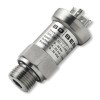 Pressure transducers & transmitters with silicon strain gauge sensing diaphragms which have output signals with good linearity, hysteresis and short term repeatability. Semiconductor pressure sensors also have high overpressure ratings and sensitivity due to the high gauge factors of the semiconductor strain gauges.
Pressure transducers & transmitters with silicon strain gauge sensing diaphragms which have output signals with good linearity, hysteresis and short term repeatability. Semiconductor pressure sensors also have high overpressure ratings and sensitivity due to the high gauge factors of the semiconductor strain gauges.
Choose a silicon pressure sensor from the list below to view product specification details and request a price quotation.
Products
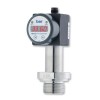 DS200P Sanitary Low Range Pressure Gauge, Switch and Sensor - All in one electronic switch, gauge and sensor designed specifically for use in the food, drink and biomedical industry for measuring process pressures.
DS200P Sanitary Low Range Pressure Gauge, Switch and Sensor - All in one electronic switch, gauge and sensor designed specifically for use in the food, drink and biomedical industry for measuring process pressures.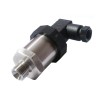 IMPLR Low Range All Stainless Steel OEM Pressure Sensor - Low cost sensor for measuring small pressure ranges from 0-50 mbar (10 inH2O) to 0-1000 mbar (15 psi) of liquids or gases.
IMPLR Low Range All Stainless Steel OEM Pressure Sensor - Low cost sensor for measuring small pressure ranges from 0-50 mbar (10 inH2O) to 0-1000 mbar (15 psi) of liquids or gases.
 DMP331 Precision Pressure Transmitter
DMP331 Precision Pressure Transmitter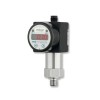 DS210 Combined Low Pressure Switch, Indicator and Sensor
DS210 Combined Low Pressure Switch, Indicator and Sensor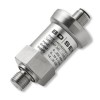 DMP343 Low Range Pneumatic Pressure Sensor
DMP343 Low Range Pneumatic Pressure Sensor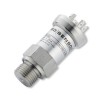 DMP333 High Range Precision Pressure Transmitter
DMP333 High Range Precision Pressure Transmitter
Applications
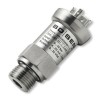 Dust ATEX approved 2 psi pressure transmitter - Pressure transmitter with a 0-2 psi range and a 4-20mA output signal for use in a zone 20 hazardous dust environment.
Dust ATEX approved 2 psi pressure transmitter - Pressure transmitter with a 0-2 psi range and a 4-20mA output signal for use in a zone 20 hazardous dust environment. Diaphragm sealed high temperature pressure transmitter for -1 to 25 kg/cm² - Diaphragm sealed pressure transmitter for measuring over -1 to 25 kg/cm² on liquid with a flush type diaphragm up to a temperature of 190°C.
Diaphragm sealed high temperature pressure transmitter for -1 to 25 kg/cm² - Diaphragm sealed pressure transmitter for measuring over -1 to 25 kg/cm² on liquid with a flush type diaphragm up to a temperature of 190°C. Anaerobic digestion methane gas 2bar pressure transmitter - ATEX pressure transmitter to measure the pressure of methane gas line in an anaerobic digestion plant.
Anaerobic digestion methane gas 2bar pressure transmitter - ATEX pressure transmitter to measure the pressure of methane gas line in an anaerobic digestion plant.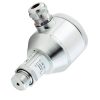 800 kPa g range 4-20mA output freshwater pressure sensor for agricultural pump use - A robust pressure sensor with field housing protected electronics for agricultural pump use to measure pressure of freshwater over a range of 0 to 800 kPa g from the 1/4 BSP P male process connection, and sending the corresponding 4-20mA signal through the field housing electrical connection.
800 kPa g range 4-20mA output freshwater pressure sensor for agricultural pump use - A robust pressure sensor with field housing protected electronics for agricultural pump use to measure pressure of freshwater over a range of 0 to 800 kPa g from the 1/4 BSP P male process connection, and sending the corresponding 4-20mA signal through the field housing electrical connection.
 800 to 1200 mbar atmospheric pressure transmitter
800 to 1200 mbar atmospheric pressure transmitter SIL2 approved 10 bar pressure transducer with 4 to 20 mA output
SIL2 approved 10 bar pressure transducer with 4 to 20 mA output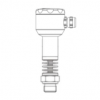 Minus 30 inHg 4-20mA air pressure sensor for measuring vacuum in a sealed tank heated to 350F
Minus 30 inHg 4-20mA air pressure sensor for measuring vacuum in a sealed tank heated to 350F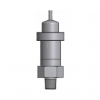 Nip roller 100 psi g 0-10Vdc output air pressure sensor for pressing laminated materials
Nip roller 100 psi g 0-10Vdc output air pressure sensor for pressing laminated materials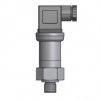 Natural gas buffer tank 5 barg 4-20mA output natural gas pressure transmitter
Natural gas buffer tank 5 barg 4-20mA output natural gas pressure transmitter Food processing freshwater transfer pump 4 barg 4-20mA pressure sensor
Food processing freshwater transfer pump 4 barg 4-20mA pressure sensor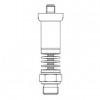 20 barg 4-20mA output 200degC steam pressure sensor for process control use
20 barg 4-20mA output 200degC steam pressure sensor for process control use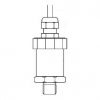 0-50 mbarg 4-20 mA output natural gas monitoring pressure sensor
0-50 mbarg 4-20 mA output natural gas monitoring pressure sensor
- -2 to 2 inHg g 4-20mA out intake and exhaust air pressure sensor for building management use
- 3000 psia high accuracy 0-10Vdc out pressure sensor for leak checking pressurized tanks
- 40 bar absolute 0-20mA output air pressure sensor for pneumatic monitoring
- 3 psig range 4-20mA output natural gas pressure sensor for building boiler heating use
- -1 to 20 bar g compound range IS 4-20mA propane pressure sensor for process control use
- -0.5 to +0.5 bar gauge 0-5 volts output compound range pressure sensor
- 1,500 psig 4-20mA out mineral hydraulic oil pressure sensor for material testing machines
- 6 bar absolute 0-10V out high temperature freshwater pressure sensor for solar thermal systems
- -5 to +5 psig bidirectional low range 0-5 volts output pressure sensor
- 0 to -200 mbar negative gauge suction range 4-20mA output stainless steel pressure sensor
- 1000 mbar absolute vacuum range 0-10Vdc output air pressure sensor for research use
- 100 inH2Og 4-20mA low concentration acid solution pressure sensor for CIP cleaning
Product Help
Advantages of Silicon Pressure Sensors
![]() Pressure sensors that utilise silicon sensing elements offer many advantages over other pressure sensing technologies, they are small, lightweight, highly repeatable, stable over time, dynamically responsive and very sensitive to variations in pressure.
Pressure sensors that utilise silicon sensing elements offer many advantages over other pressure sensing technologies, they are small, lightweight, highly repeatable, stable over time, dynamically responsive and very sensitive to variations in pressure.
100% Elastic
The base diaphragm material is typically ‘n’ type mono-crystalline layer Silicon which is 100 % elastic to its breaking point and therefore is a perfect material for use as a sensing diaphragm.
Repeatability
The strain gauges which are the key elements for converting pressure into an electrical signal are created by ion implantation of masked areas of the silicon in to create tiny ‘p’ type regions at strategic points on the diaphragm surface. When a reverse bias voltage is applied between the ‘n’ type substrate and ‘p’ type regions the ‘p’ type regions become electrical isolated and due to the relative increased conductivity of the ‘p’ type region they exhibit resistive characteristics and when pressure is applied the ‘p’ type regions behave as strain gauges. Since the strain gauges are chemically changed areas of a uniform piece of material they will deform almost perfectly with the stresses of the diaphragm without lag or separation and thus the repeatability of measured pressure points is very good over many pressure cycles.
Low Hysteresis
The combination of a high elasticity material and near perfectly bonded and integrated strain gauges produces a structure with very little hysteresis ensuring that pressure readings are precise regardless of the direction of changing pressure.
High Gauge Factors
The p type region or semiconductor strain gauge is behaves in a similar way to more conventional foil strain gauges with a change in resistance when the gauges are stretched or squeezed, however there is an added semiconductor property which combines with the resistive variation to increase the sensitivity or gauge factor of the Silicon strain gauge. Thus high levels of voltage drop can be achieved across semiconductor strain gauges for a given pressure change which allows users to make better use of analogue to digital resolution and improve signal to noise ratios.
Small Size and Lightweight
Silicon piezo-resistive elements are manufactured in the same way that miniature silicon chips are that are used in micro-electronics. The combination of chemical etching micro-machining, doping and masking techniques to create mechanical structures with micro-electronic components enables the productions of very small sensing elements. This in turn helps engineers to design smaller pressure sensors since the sensing diaphragm for other technologies is often the limiting factor controlling the diameter of the final design.
Low Susceptibility to Acceleration
The small size and low weight of silicon sensing elements make them less susceptible to acceleration. Therefore these sensors are often used in applications which have high levels of ‘G’, shock or vibration.
Long Term Stability
Semiconductor strain gauges are not glued, printed or electro-plated to the surface to the sensing diaphragm. And instead are a chemically changed part of the same material. Over time strain gauge bonds can deteriorate or change with pressure and temperature cycling causing instabilities in the sensor performance. Semiconductor strain gauges have no bonds and therefore are extremely stable in comparison.
High Overpressure Rating
The higher gauge factors of semiconductor strain gauges compared to other types of strain gauge make it possible to use stiffer diaphragms for a given pressure range to allow a high overpressure rating to be specified without compromising too much sensitivity. The high elasticity of Silicon also makes it possible to strain Silicon further than other less elastic diaphragm materials with virtually no resulting stress.
Dynamic Response
Due to high sensitivity of semiconductor strain gauges the thickness to cross-sectional area is relatively high for a sensing diaphragm plus the miniature size results in a very high natural frequency in the order of 10 – 100 kHz. This combined with the elasticity and atomically bonded strain gauges makes Silicon strain gauge diaphragms highly responsive to rapid changes in pressure.
Disadvantages of Silicon Pressure Sensors
Some of the potential issues that should be discussed with manufacturers before selecting silicon pressure sensors in the following applications.
Shock pressures
Hydraulic pressure systems can generate very rapid changes in pressure, due to high speed actuation and valve operation, plus the rapid responsiveness of the hydraulic system architecture.
Systems with water flowing in pipe work are prone to water hammer. When a valve is closed quickly it will cause a sudden drop in flow speed, which translates as shock pressure, and produces a knocking noise, hence the name water hammer.
These shock pressures can easily exceed the pressure rating of silicon pressure sensors damaging the silicon diaphragm or rupturing the very thin metal isolation diaphragm of oil filled silicon sensor capsules.
High vacuum
Many types of silicon pressure sensors have the silicon chip element incorporated inside an oil filled metal capsule with a thin isolation diaphragm to allow the oil fill to be pressurised and measured by the silicon chip. When a vacuum is applied to the isolation diaphragm, it will subsequently generate a vacuum in the oil fill.
The oil used should have a very low saturated or equilibrium vapour pressure, and has to be heated separately along with the empty metal capsule, prior to the filling process, in a high vacuum to remove water and other liquids with a high vapour pressure. The amount of attention that is given to this stage of the manufacturing process will affect how well the silicon pressure sensor performs over the vacuum range, particularly at high vacuum.
Even though a measurement at high vacuum is unlikely to be useful, due to the accuracy limitations of silicon pressure sensors in measuring high vacuum, there maybe consequences which typically show as a calibration shift, either temporarily or more permanently.
Chemical corrosion
As mentioned above the silicon part of silicon pressure sensors, refers to the silicon chip transducer technology which is the fundamental electromechanical component which is measuring the pressure.
Due to the complex construction and vulnerability to direct contact with, and exposure to the process media in many applications, it is often necessary to package the silicon chip assembly inside a hermetically sealed metal capsule to protect it from damage.
Stainless steel is the most common metal used in the construction of the capsule, including the isolation diaphragm, although this can be made from other more exotic metals such as hastelloy, monel, inconel and titanium for more demanding applications. However some chemicals are highly corrosive to metals, particularly the very thin isolation diaphragms, and in these cases other sensor technologies such a ceramic pressure sensors have to be used instead.
Low pressure
Due to the small silicon chip size, it becomes impractical and uneconomical to produce sensing elements which provide sufficient performance at very low pressure ranges.
Exposed silicon sensors without oil filled capsules, have more measurement sensitivity and thus better accuracy performance at lower ranges, but they are still limited to range of a few millibars or inches of water.
High pressure
The fabricated construction of the majority of silicon pressure sensing elements, makes it much more difficult to produce a robust and long lasting product design for use in very high pressure applications. Very high pressure sensors are typically made from an all stainless steel sensing element with as few welds as possible.
Silicon strain gauges are sometimes incorporated into stainless steel sensing diaphragms, but these are not strictly classed as silicon pressure sensors since the fundamental sensing element is made from stainless steel.
High temperature
Silicon sensing technologies which rely on different types of semiconductor regions have a maximum operating temperature which is fundamental limitation imposed by the physics of semiconductors. If this temperature limit is exceeded the electronic properties begin to breakdown and lead to a loss of sensor performance.
In order to use silicon pressure sensors at higher temperatures than is allowed by the particular silicon sensor technology, it is necessary to incorporate cooling features, to reduce the temperature around the silicon chip to operational limits.
Low temperature
Oil filled silicon pressure sensors will perform differently at low temperatures due to the thickening of the oil and at extreme low temperatures. This directly affects the performance of a silicon pressure sensor, which relies on a highly fluid coupling between the process media and silicon chip.
Hydrogen gas
As mentioned previously, many types of silicon pressure sensors have the silicon pressure sensing chip hermetically sealed within an oil filled capsule with a very thin metal diaphragm to transfer the pressure.
Hydrogen is the smallest sized element and exists in a gaseous state under standard ambient temperature and pressure conditions.
Due to Hydrogen relative small size and mobility as a gas, some hydrogen ions will pass through thin materials, and over time a significant quantity will migrate from one zone to another, especially if there is pressure difference between the two zones.
Hydrogen ions can diffuse through the very thin isolation diaphragm of some silicon pressure sensors, which will affect the calibration of the sensor, and may lead to other issues depending on the material and methods used to construct the sensor. This permeation can be combated by coating the isolation diaphragm with a material which blocks the passing through of hydrogen gas such as plating it with gold or other material which is much denser than the base isolation diaphragm material.
Some steels are susceptible to Hydrogen embrittlement where hydrogen accumulates within the steel over time eventually causing minor cracks to form which eventually cause the steel to fail. It is possible to prevent this from occurring by adopting the use of high grade stainless steels such as 316 in the manufacture of the components exposed to hydrogen gas.
Checklist for silicon pressure sensor requirements
Define your silicon pressure sensor requirements using this checklist:
- Pressure range?
- Overpressure?
- Output signal?
- Dynamic response?
- Accuracy?
- Electrical connection?
- Process connection?
- Size dimensions?
- Process media type?
- Media temperature range?
- Environment temperature range?
- Environment shock and vibration?
- Shock pressures?
- High vacuum exposure?
- Hydrogen exposure?
